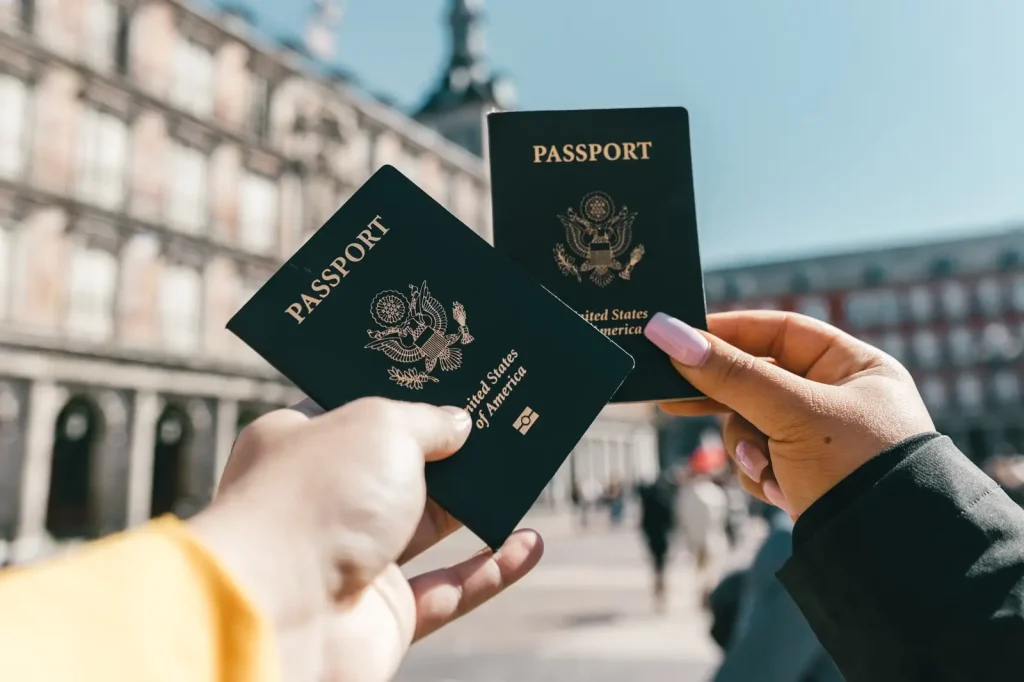
Fiancé Visa vs. Spouse Visa: Which Marriage Visa Is Right for Your Relationship?
September 22, 2025
What is the American Families United Act? Hope for Family Unity in U.S. Immigration Policy
November 5, 2025
Fiancé Visa vs. Spouse Visa: Which Marriage Visa Is Right for Your Relationship?
September 22, 2025
What is the American Families United Act? Hope for Family Unity in U.S. Immigration Policy
November 5, 2025
Sham Marriage Myths vs. Facts: How to Prove a USCIS Bona Fide Marriage for Green Card
Imagine this: Sarah and Miguel met three years ago when she was teaching English in Mexico City. They fell in love over late-night conversations about art, family, and their dreams for the future. After a year of long distance, they married in a small ceremony surrounded by both families.
The love was real. The marriage was legal. But when they walked into their USCIS interview six months later, nothing went as planned.
The officer asked who paid the electric bill. Sarah said Miguel did. Miguel said they split it. The officer asked what time Miguel left for work. Sarah said 7 a.m. Miguel said 8. Small inconsistencies, honest mistakes from nerves. But combined with the fact that they'd submitted only a handful of photos and one joint bank account statement, the officer saw red flags.
Three weeks later, they received a Request for Evidence demanding proof they actually lived together as a married couple. Their case ground to a halt. What should have been the beginning of their life together in the U.S. turned into months of anxiety, scrambling for documents, and wondering if one bad interview would tear their future apart.
This is a fictional story, but the situation is painfully common.
USCIS takes sham marriages seriously, and the consequences for even appearing fraudulent are severe.
Genuine couples often stumble, not because they are dishonest, but because they misunderstand what USCIS really looks for. They assume their love is obvious. They think a marriage certificate speaks for itself. Or they believe that a handful of photos will be enough.
The reality is more nuanced. USCIS does not question your feelings. They evaluate patterns, consistency, and documentation that demonstrate a life built together.
In this guide, we'll break down 10 of the most common myths about sham marriage allegations, explain what USCIS actually evaluates, and show you how to avoid the pitfalls that derail legitimate cases.
Looking for immigration support you can trust? Get in touch today for a complimentary consultation with one of our immigration attorneys.
Myth #1: A Legal Marriage Certificate Is All USCIS Needs
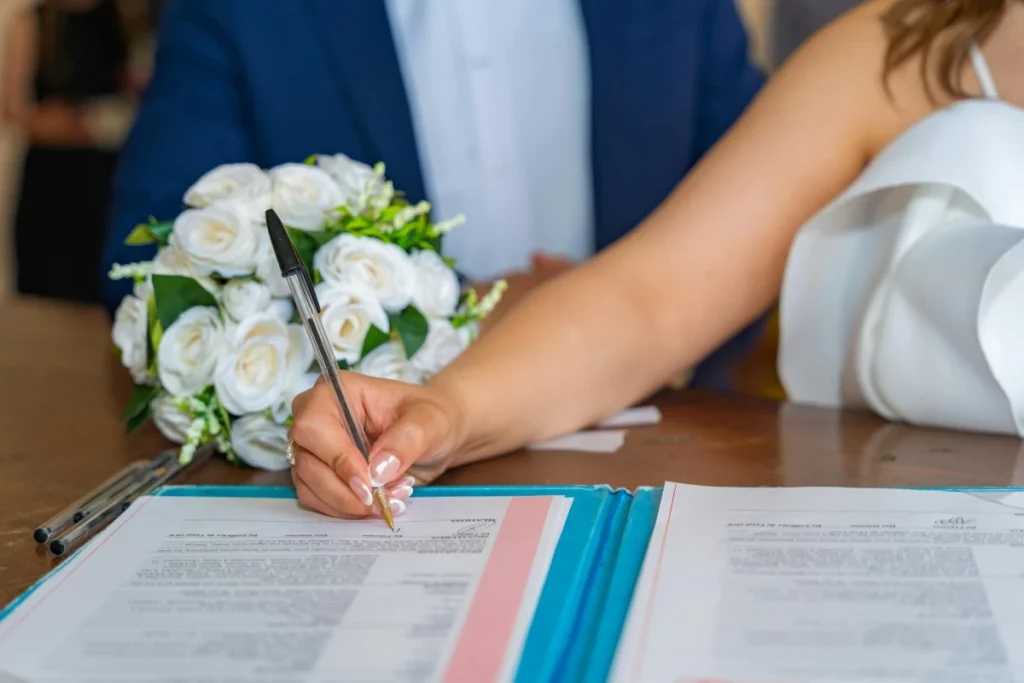
Your marriage certificate proves you got married. It does not prove why you got married.
Under Immigration and Nationality Act (INA) § 204(c), USCIS evaluates whether a marriage is "bona fide," meaning the couple entered into the marriage for love and companionship, not to evade immigration laws. The petitioner bears the burden to prove the marriage is genuine.
Consider this scenario: Two people meet, marry within weeks, and immediately file for a green card. They have a legal marriage certificate, but they have never lived together. Their bank accounts remain separate. When USCIS reviews the case, they see a legal marriage with almost no evidence of a shared life.
The result? An RFE asking for documentation of cohabitation, commingled finances, and proof of an ongoing relationship. The couple is not lying, but they have not demonstrated the substance of their marriage.
Legal status and bona fide status are two different things, and USCIS evaluates both.
Myth #2: A Few Photos and a Joint Bank Account Are Enough to Prove a Bona Fide Marriage

Many couples assume that submitting a dozen wedding photos and opening a joint checking account is sufficient. But USCIS does not look for isolated pieces of evidence. They look for a consistent story across multiple categories.
Strong applications include evidence from several areas:
Financial Ties:
Joint bank accounts, joint credit cards, shared mortgages or leases, joint loans, beneficiary designations, jointly filed tax returns.
Cohabitation:
Lease or deed showing both names, utility bills addressed to both spouses, mail from financial institutions or government agencies, mortgage or property tax documents.
Travel and Communication:
Flight itineraries and hotel reservations in both names, photos with location and date stamps, phone or messaging records showing communication, especially during separations.
Shared Responsibilities:
Joint insurance policies (health, auto, life), emergency contact designations, evidence of shared household purchases.
Community Integration:
Affidavits from friends or family, invitations addressed to both spouses, membership cards, photos from social or family events.
Quality over quantity matters. Photos that document holidays, family visits, everyday moments, and milestones over time tell a richer and more credible story than a few photos from a wedding day alone.
Myth #3: USCIS Looks Only for Obvious Fraud

USCIS carefully reviews all marriage-based applications. Certain factors increase scrutiny even without fraudulent intent. These include:
- Significant age gaps
- Very brief courtship before marriage
- Large socioeconomic or educational differences
- Cultural or language barriers with no explanation of communication methods
- One spouse having removal orders or visa denials
- Limited or no proof of time spent together before marriage
- Inconsistencies in application and interview answers
These factors do not prove fraud but prompt enhanced investigation. The Fraud Detection and National Security Directorate (FDNS) may conduct unannounced visits or more in-depth questioning.
Couples with long-distance relationships, especially those who never cohabited, must provide detailed evidence like video call logs, messaging history, visits, and consistent communication records. Lack of traditional cohabitation evidence makes other proofs more critical.
Myth #4: Our Marriage is Authentic, So We Don’t Need an Immigration Attorney

Anyone may self-petition, but statistics and practitioner reports show a substantial portion of marriage-based cases receive Requests for Evidence related to insufficient proof of bona fide marriage.
Self-filers often do not understand what USCIS looks for and may submit imbalanced evidence—many photos but no financial documents, or a lease without supporting utility bills.
Experienced immigration attorneys structure evidence to preempt issues, identify gaps, organize documents clearly, and address complications such as prior overstays or separations. Early legal guidance can reduce delays, RFEs, and stress navigating the process.
You don’t have to face the immigration process alone. Our experienced attorneys take the time to understand your relationship, your goals, and your challenges.
Get honest, strategic guidance you can trust — schedule your complimentary consultation today.
Myth #5: Entering on a Tourist Visa and Marrying Is Fine If the Marriage Is Real
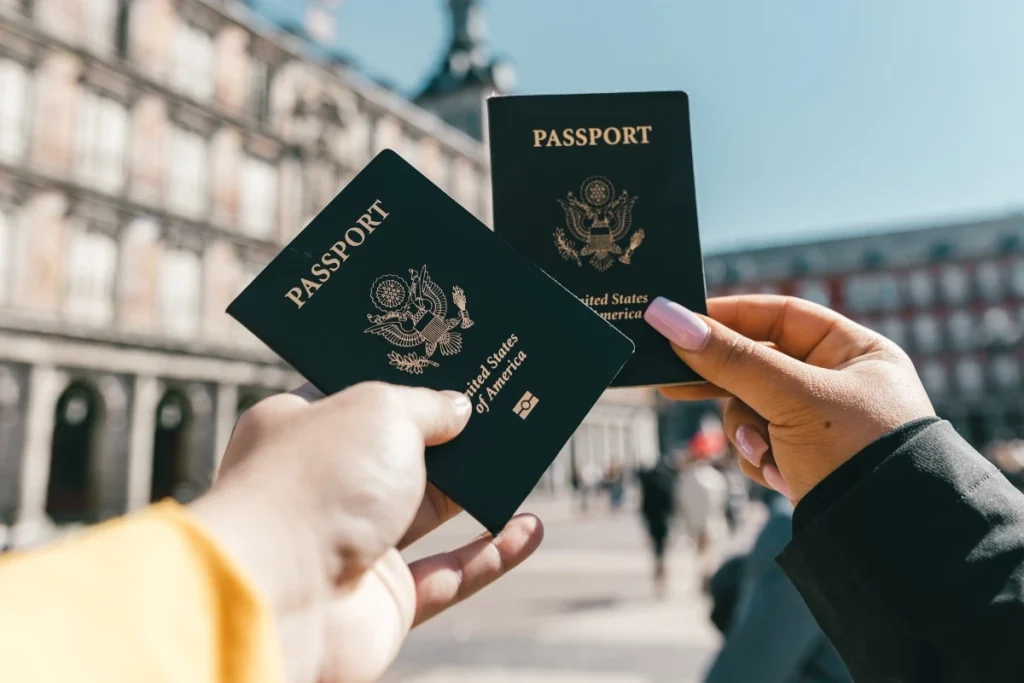
Entering the U.S. on a tourist visa (B-2) or Visa Waiver Program (ESTA) with the intent to marry and adjust status is a misrepresentation at entry, risking visa fraud findings with serious consequences.
The Department of State applies a 90-day rule presumption: conduct inconsistent with nonimmigrant intent within 90 days of entry suggests misrepresentation. USCIS doesn’t formally follow this as binding but considers similar timelines in evaluating entry intent. A quick marriage and filing can raise red flags.
Proper legal paths include the K-1 fiancé visa or marrying abroad then applying for an immigrant visa. Trying to shortcut the process with a tourist visa risks denials or fraud findings.
Myth #6: If We’re Honest in the Interview, We Won't Get Flagged as a Sham Marriage

Honesty is essential during any green card application, but consistency matters.
USCIS may schedule more detailed interviews where spouses are questioned separately (known as “Stokes interviews”). Questions test shared knowledge of daily life: bed sides, breakfast, couch color, where toothbrushes are kept, chores, favorite meals, etc.
Nervousness or lack of preparation can cause inconsistent answers, which leads to further scrutiny during the marriage green card interview. Couples should prepare by reviewing their submitted application and shared life details, not by rehearsing answers.
Myth #7: Any Criminal Record or Past Violation Means Automatic Denial for a Marriage Green Card
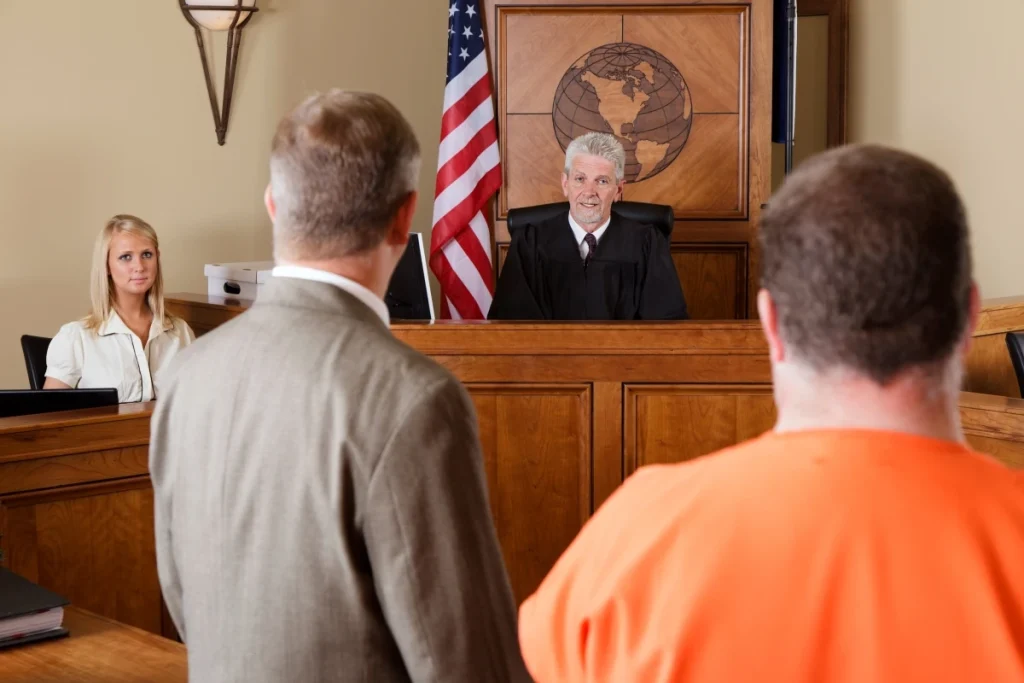
Not all violations or criminal histories bar immigration; waivers exist for many issues.
For example, I-212 waivers may allow returning after removal. See USCIS policy or speak with an immigration attorney to understand your unique situation and eligibility requirements.
Marriage fraud under INA § 204(c) results in a permanent bar to any marriage-based green card, even if filed later by a different petitioner. This bar is very difficult to overcome. Transparency and legal counsel are crucial.
Myth #8: Once We Get the Two-Year Green Card, We’re Safe From Immigration Authorities
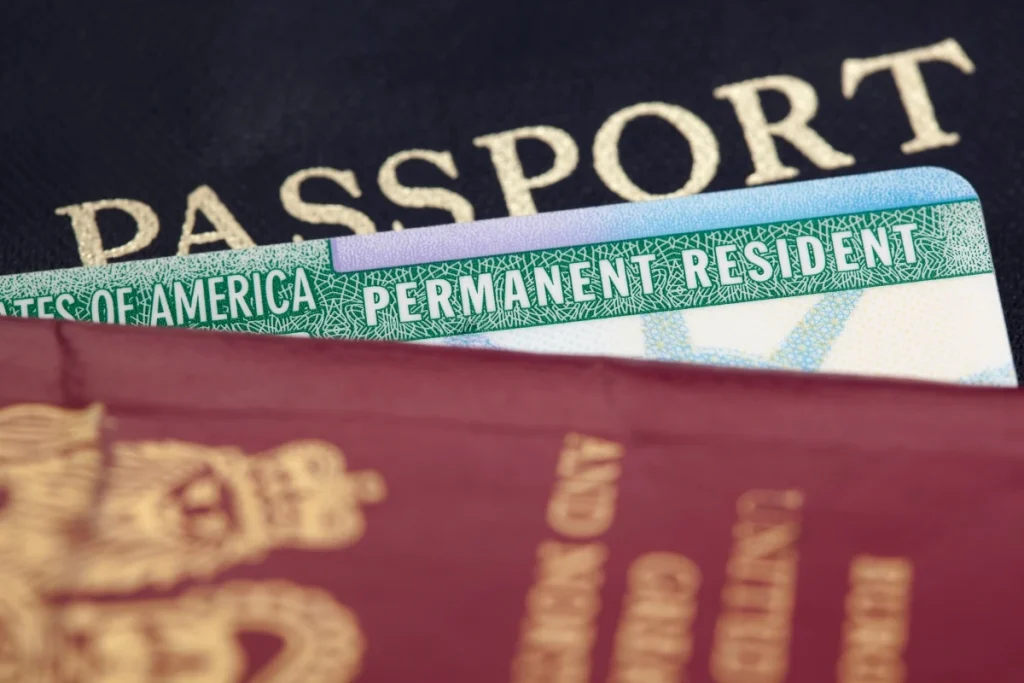
For couples who have been married for less than 2 years at the time of approval, conditional resident status lasts two years. After receiving a two-year conditional green card, couples must later file a petition to remove conditions on residence (Form I-751) to prove the marriage is still genuine and ongoing.
Divorcing before I-751 filing requires a waiver proving the marriage was genuine at inception—harder but possible for immigration purposes. USCIS can revoke green cards years later if fraud emerges since there is no statute of limitations on immigration fraud.
Myth #9: Living Apart Means USCIS Will Assume It’s Fraud During Our Green Card Interview

Living apart doesn’t disqualify you if you provide legitimate reasons: USCIS considers work, military, schooling, caregiving, or immigration status issues.
Explain your situation in your application with a detailed cover letter. Provide records of communication (phone, video, email), visits (flight receipts, photos), and financial ties despite distance.
USCIS understands modern life’s complexity but requires documentation and evidence that you function as a married couple.
Myth #10: USCIS Rarely Catches Fraudulent Marriage
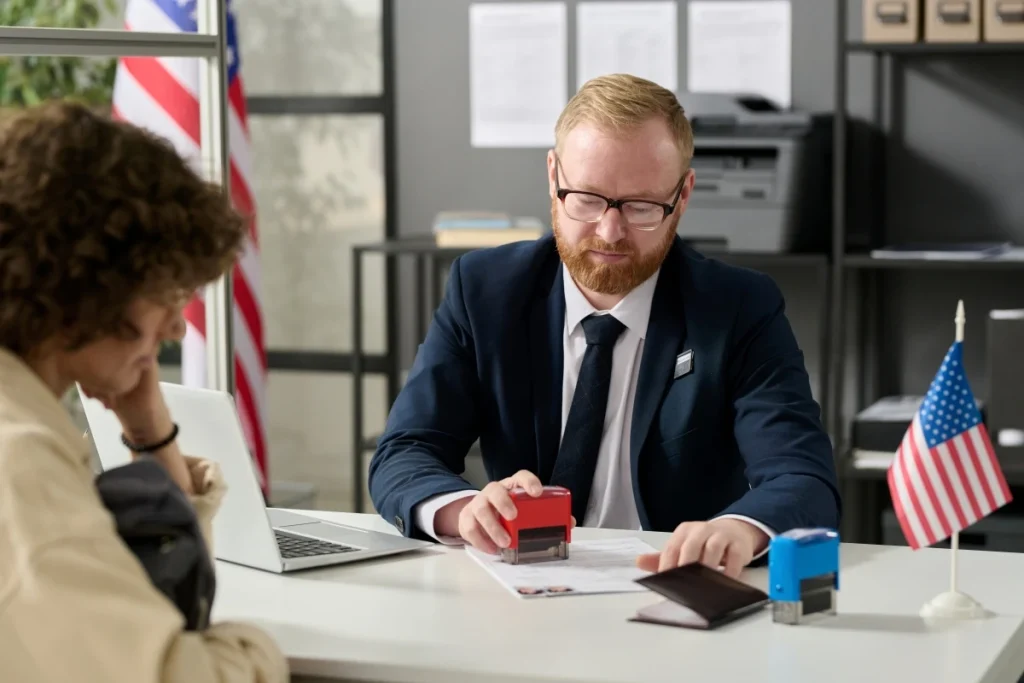
USCIS, ICE, and the Department of Justice actively investigate and prosecute marriage fraud. The enforcement surge in 2024 and 2025 by immigration officers represents the most intensive crackdown since 2017.
Several operations have led to arrests and indictments of marriage fraud rings involving paid sham marriages, fraudulent documentation, and coaching.
Under 8 U.S.C. § 1325(c), marriage fraud penalties include imprisonment up to five years, fines up to $250,000, deportation, and permanent immigration bars. Fraud findings adversely affect future sponsorships, travel, employment, and naturalization.
In Review: What USCIS Actually Looks For to Prove Your Marriage
- Cohabitation Evidence: Shared leases, utility bills, official mail addressed to both spouses, and proof of shared expenses help prove a good faith marriage.
- Financial Interdependence: Prepare to submit evidence like joint bank and credit accounts, insurance beneficiaries, jointly filed tax returns, joint property ownership, financial support.
- Communication and Travel: Phone, email, messaging history; shared trip itineraries and photos with date/location.
- Social Integration: Affidavits from family and friends, invitations, social media history, photos from life events.
- Continuity and Consistency: Evidence spanning your entire relationship; aligned forms, interview answers, and supporting documentation.
No single category is decisive; the USCIS policy manual looks for a consistent pattern and credible story for evidence of bona fide marriage.
Common Marriage Fraud Pitfalls and How to Avoid Them

- Inconsistent Information: Review your relationship timeline and details before interviews.
- Insufficient Evidence: Provide diverse supporting documents across categories to showcase strong evidence of a marital relationship
- Rushing RFE Responses: Gather exactly what is requested; seek attorney help if needed.
- Ignoring Red Flags: Proactively explain complicated circumstances in a cover letter.
- Assumptions: Don’t assume USCIS understands; provide context for separate residences, short courtships, language barriers, etc.
- Poor Interview Preparation: Prepare by discussing shared life facts, not rehearsing answers.
Key 2025 U.S. Immigration Updates You Need to Know

If you're applying for a marriage-based green card, you need to know about important policy changes that took effect August 1, 2025. Additionally, it’s important to be aware of the following updates:
Enforcement Surge: Since January 2025, USCIS has referred over 460 marriage fraud cases to ICE, facilitating nearly 370 arrests nationwide, with aggressive prosecutions and dismantling of marriage fraud rings generating millions in illicit proceeds.
Mandatory Interviews and Stokes Interviews: The Biden-era practice of interview waivers largely ended. USCIS reinstated mandatory interviews for almost all marriage cases with increased scrutiny and frequent use of separate Spouse “Stokes” interviews.
Stricter Form Requirements: Updated 2025 editions of forms (I-130, I-485, I-129F) are mandatory. Errors or outdated forms lead to rejections or delays.
Social Media Reporting: Applicants must disclose social media handles. USCIS officers incorporate social media vetting into the fraud detection process and to prove evidence of a bona fide marriage.
Expedited ICE Referrals and Removal Proceedings: Denied applicants who are out of status now face automatic ICE referrals for removal proceedings instead of routine administrative closures.
Get the Right Evidence to Prove a Good-Faith Marriage from the Start

Your relationship deserves clear, confident representation. Given the increasingly aggressive enforcement and procedural complexity in 2025, working with experienced attorneys for citizenship and immigration services is more important than ever.
Schedule your complimentary consultation with Strang Immigration today — and move forward with confidence.
ABOUT US

We are dedicated to protecting your legal rights at every stage of the process. Discover for yourself how our immigration attorneys can help you obtain a successful outcome

